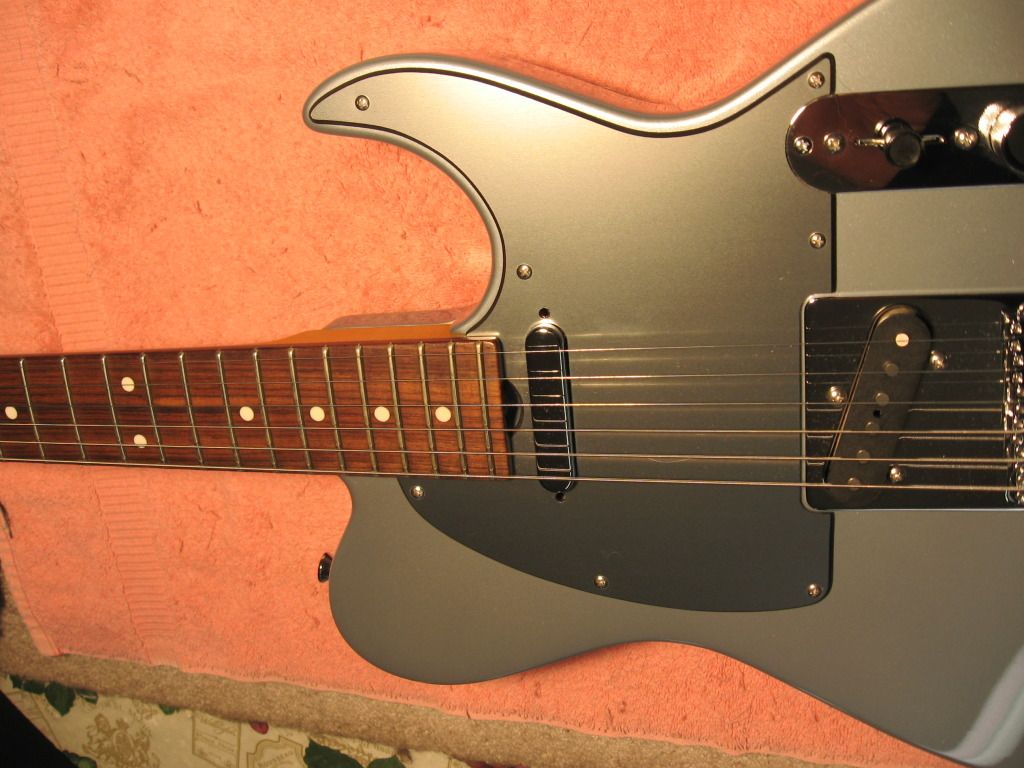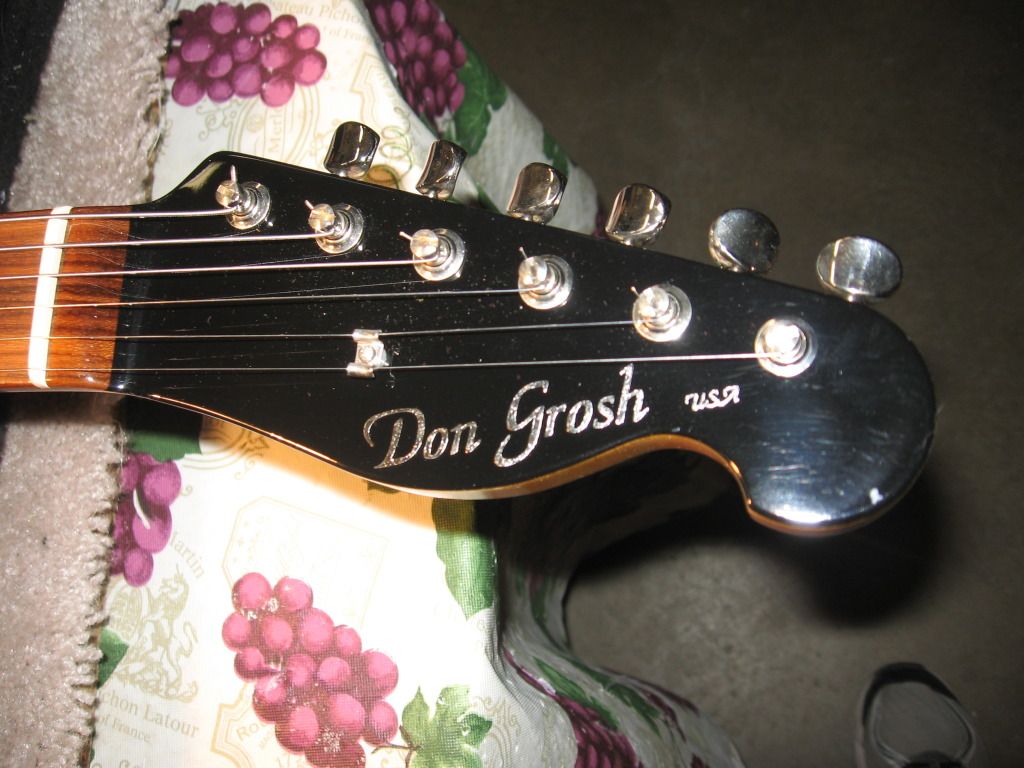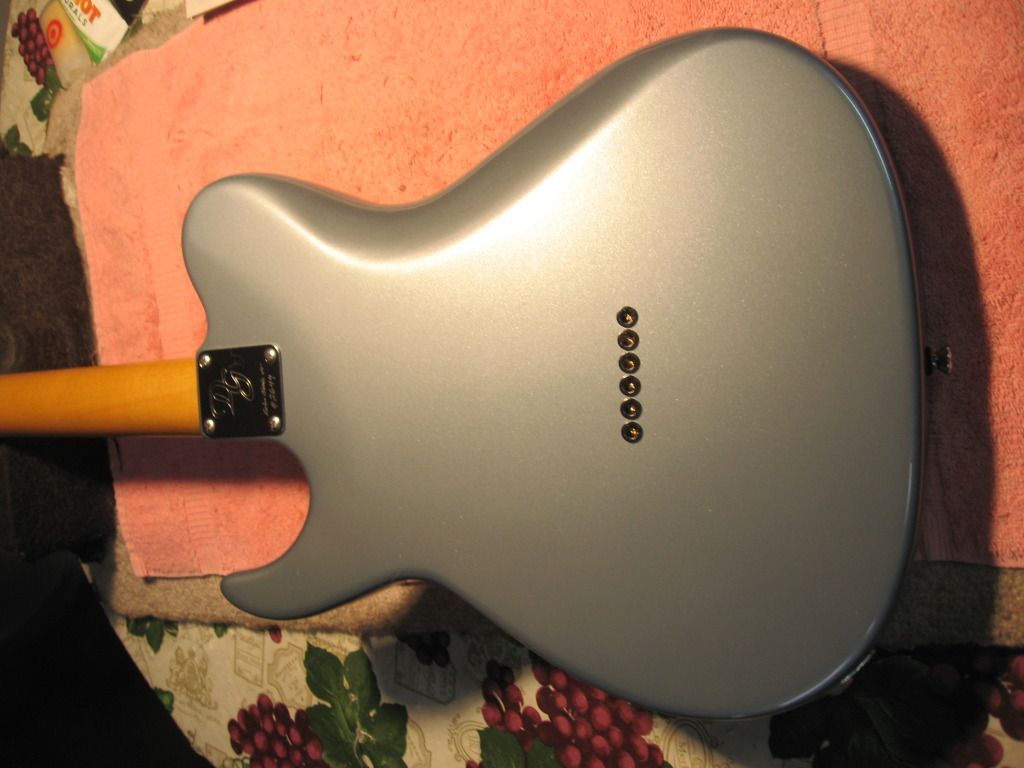So we look at high end guitars and what makes them so special? They talk about "Tapped tone woods" and some other sonic things that are hard to measure. We would all expect great fit and finish, well put together and some of your other requirements. I brought home a Don Grosh Retro Classic Vintage T. I have really become a T type guy and I looked at this one long and hard. Now what would should a guitar that costs more than double than most of my G&Ls have? That is a fair question and I think is even more difficult to justify than one would want to answer. So here it what I have found.
The build quality is outstanding, the paint is terrific, the neck is finished beautifully and it has hardware you would expect on a guitar like this. After playing it unplugged for a while I really liked it. It has a large roundback neck which really felt good. So home it goes and I check the setup, wax it and now am ready to give it a test drive. The setup was the most perfect for me of any guitar that I have ever received, although several of my G&Ls have been very close. I have 8 double 40 watt florescent lights in garage and any single coil guitar will have noise. I plugged it into my custom15 and I could not believe what I was hearing. A Tele with NO noise. What??? I checked it out a bit an the tone is awesome. I then decided I needed to look further. I removed the control plate and discovered that the control area is finished with shielding paint, it apears to have orange capacitors and the part in the control plate were quality. I also discovered that the pickguard was covered in the back with copper and grounded to the control plate. I am certain the pickup route is also shielded with paint. Now, I sat and thought about this a bit and wouldn't you expect that from a custom build?
Tonight I brought out a couple of G&Ls to compare to and this should not be a fair comparison. My Gold Flake Asat Classic has some noise from the lights. I also have a quartz lamp over my guitar workbench and the Classic picked up noise from that. I then brought my Launch Edition Alnico out. It really surprised me as it is very quiet. I did a comparison of the pickups and was really surprised to see that the Alnicos are very close to the Grosh pickups. The Alnico had a bit more spank in the bridge and you already know that they are among my favorites. Now I am impressed with my G&L Launch Edition. So here is my point. G&L really has it going for them. How many of you would be willing to pay more for shielding and better electronic components in the controls? I don't think that it would add a lot to the cost of building the guitar, and my Anico Launch is less than half the price of the Grosh. I think that is food for thought. Here are some pics.-- Darwin
This is Glacier Blue Metallic

The waist is a bit thinner than an Asat and the lower horn is almost strat like. It has a brushed pickguard.



and the control cavity

